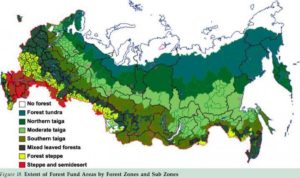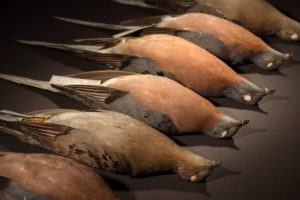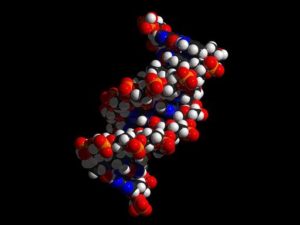IJWR – vol.1 – 2018 – EDITORIALS
EDITORIALS
ITALIAN JOURNAL WOODPIGEON RESEARCH – IJWR – 2018 IJWR @2018
Vol.1 –
EDITORIAL
Current Status of Woodpigeons ( Columba palumbus ) in Russia
MISCHENKO Alexander – Senior Researcher ,Severtsov’s Institute of Ecology and Evolution – Russian Academy of Science – Moscow – RUSSIA – http://www.sevin.ru
Email: almovs@mail.ru
STATUS of WOODPIGEONS in RUSSIA
The breeding range of Woodpigeon in the Russian Federation covers large territory from the western state border up to Urals and southern regions of West Siberia. In opposite West Europe, Woodpigeon is a “wild” bird in Russia, avoiding urban habitats, except Kaliningrad Region (the former Eastern Prussia) and a few cities in the south. It prefers to nest in hidden places at the edge of woodlands adjoining to farmlands. The main nesting tree in the forest zone of Russia is spruce. In the post-breeding season woodpigeons become conspicuous and concentrate in the harvested fields of cereals.

In the steppe zone of Russia, Woodpigeon breeds among large area of farmlands. It was a rare species in steppes until 1960s. But during 1960-1970s there was created a network of protective forest stripes, which was fast inhabited by the nesting Woodpigeon, even inside arid areas. In 1980s the species was already rather common in old forest plantations and forest stripes along channels. Woodpigeon’s colonization of protective forest stripes in steppe was brightly manifested in the last decade of XX century. In those years the species had appeared in farmland areas of South Russia in a significant number and it is abundant till now.
Part of the Russian woodpigeons spend winter in the south of Russia and another part – in the South-west Europe (mainly in Italy and Spain). The most important wintering area of woodpigeons in Russia is the Black Sea coast of the North Caucasus. The main wintering habitat of the species there is represented by slopes of mountains with rivers in canyons. Broad-leaved forests with mosaic of cliffs and rocks are dominated there. The distribution and numbers of wintering woodpigeons in the North Caucasus varies in different years, depending from winter conditions and resources of available food (beech nutlets, ivy fruit, chestnut and oak acorns).
Hunting pressure on the Woodpigeon in Russia at whole is low. The species is not popular among the Russian hunters, because hunting on this bird in flocks on mown farmlands is difficult due to its high caution. Only in the Black Sea Coast hunting on wintering woodpigeons is popular. But the total amount of hunters specialized on harvesting woodpigeons is not large. By the data of state hunting statistics, the total amount of Woodpigeons shot by hunters in Krasnodar Territory North Caucasus during all hunting period in autumn and winter, is 25,000 – 30,000 individuals (Gineev, Vasiliev 2011).
The main negative factor influencing on the Russia population of Woodpigeon, is wide-scale mortality in piedmont woodlands of North Caucasus in some winters and springs. On the expert assessment, the total amount of lost Woodpigeons at winter 2010/2011 in the North Caucasus within the limits of Krasnodar Territory was not less than 40,000 individuals (Gineev, Vasiliev 2011). It is in 1.5 times more than amount of birds shot by hunters. Accurate reasons of such high mortality are unknown, virus of avian flu was not found in the Woodpigeon corpses (Tilba 1999; Gineev, Vasiliev 2011).
The total number of the Woodpigeon population in European Russia at whole for the first decade of XXI century was assessed during implementation of the BirdLife project ‘European Red List of Birds (2013). It is ca. in 500,000 – 800,000 breeding pairs. The total trend is unknown, because variously directed local trends were recorded. Probably the all Russian population is stable or even low increase takes place (Mischenko 2017).
The results of two phases of the project “Woodpigeon populations in selected regions of European Russia”, sponsored by the Federación de Caza de Euskadi (Spain) in 2011-2012 and 2013-2015, presented a good condition of Woodpigeon population in Russia. Counts of birds in the Black Sea Coast of North Caucasus have shown at least stable population of wintering Woodpigeons, in spite of strong fluctuations of numbers in some years depending from the winter conditions. The maximal number of wintering flocks in the North Caucasus in the warm winter 2014/2015 was assessed in 340,000 – 350,000 individuals. But in cold winters with high snow cover, numbers of Woodpigeons on the Black Sea coast are very low, down to 10,000 – 20,000 birds in the winter 2011/2012). In severe winters with great amount of snow main part of wintering Woodpigeons uses Imeretinskaya Lowland, located more far from the sea coast, but the main part of birds probably moves to Georgia and Turkey.
Dr. Alexander Mischenko February 2018
Senior researcher of Severtsov’s Institute of Ecology and Evolution, Russian Academy of Sciences
EDITORIAL – Introductory remarks
by Przemyslaw BUSSE (*)- Honorary EDITOR –
(*) “Birds Migration Research Foundation”
Italian Journal of Woodpigeon Research – introductory remarks
„Citizen Science” become nowadays the new approach in some branches of the science – this is a movement to incorporate a wide public into active participation in a building of scientific knowledge. A few of study fields are predisposed to such activity – especially environmental research, where collecting of the raw observational data is urgently needed, while cannot be efficiently conducted by profesionalists because of lack of available funds and a man-power. One of such scientific branches is the ornithology, where bird-watching and mass ringing already supplied since many years valuable input to the science, especially in the fields of general distribution and migration of birds. The next step would be more specific activities as arranging specialised internet based actions, for example, „Monitoring Woodpigeons’s (Columba palumbus) 2017 autumn migration” or publishing a book „Autumn migration of Woodpigeons in Italy”. The book introduces to the citizen science well and here could be cited some of the Preface:
„Information about biological processes runnng in our environment is of great interest for many groups of citizens. Educational bodies, nature protection organizations, tourists and common people would like to know „how it works” – how the environment, so much connected to our well-being and a whole life, acts, changes and adapts to strong influences of the humans. The well documented, carefully collected knowledge is the basic for understanding our life environment.
Building the necessary knowledge needs some steps – understanding the need, collecting the observations in the field and evaluating the data in a proper way. The first is the understanding that the whole process is necessary to be done – here is an enormously wide field for the social activities of the education system, but even so much for NGO’s, hobby clubs, any local social organizations and single passionates. Understanding of needs is the first step to collecting information – at the beginning by individual observations, noting them for memory, documenting by photos or private movies. Then one want to communicate information to others sharing similar interests, usually on social platforms and blogs. The dispersed and not systematically collected knowledge grows this way, sometimes to an enomous dimensions, but it is still not too useful – it is not, or to limited extent, accessible and not synthetized, thus not available to the wide public. Arranging such knowledge into more defined shape is a very difficult task: the data were collected not systematically, by differentiated observers with different customs and a field knowledge. Because of these limitations, frequently this kind of data is disregarded and not treated seriously by the academic people and institutions: they are too difficult to use in standard statistical procedures and evaluate within accepted in the science procedures. … How the amateur passionate observers could help them in a common interest: to build the knowledge acceptable for the science and understandable to the common citizens?
The presented book tries to do a sample bridge between enormous „practical” knowledge of many individual observers, in this case mainly hunters, about a migration of the Wood Pigeon and an astonishingly weak scientific knowledge about this mass phenomenon. This bird is an unique species as to possibilities to demonstrate development from citizen collected observations to the scientific description and understanding the process. The observers are many, they are much devoted to their passion and they are much interested in a result picture. However, existing data are diffused, in many cases not systematic enough and/or not documented in a such way that they are fully useful for the scientific elaboration. But they are and if collected in one book they can be a good starting basis for further development in a coordinated programmes.”
What next can be done to support the citizen science input into knowledge about the Woodpigeon? „The species needs such studies very much as the Woodpigeon seems to be an ideal species for the case studies on the migration pattern flexibility, mechanism of the phenomenon of migration waves building, weather depndencies as well as the population dynamics of the mass migrhunting value.”
The answer to the above question is simple: to manage the „Italian Journal of Woodpigeon Research”!
Przemysław Busse
March 2018
EDITORIAL PRESENTATION following
ITALIAN JOURNAL WOODPIGEON RESEARCH – IJWR – 2018 IJWR @ vol.1- 2018
8
PRESENTATION – Editorial
Presentation of the Journal by a special – ” why we should study pigeons to avoid the dramatic finish of the species as happened in Americas for the Passenger pigeon” .
THE PASSENGER PIGEON ( Ectopistes migratorius ) –
Short review
CAVINA Enrico
CIC – Italy – ecavinaster@gmail.com
Received 20 January 2018 – Accepted 31 January 2018 – //- Bibliography’s citation : CAVINA E. – The Passenger pigeon ( Ectopistes migratorius ) – EDITORIAL – IJWR 2018-vol.1:1-12
Keywords : Passenger pigeon, extinction, climate changes, genetics DNA
ABSTRACT & INTRODUCTION – Why to present the Journal by a special topic as “ the extinction of the Passenger pigeon “ happened only one century ago ? The causes of this tragic event are still discussed by many Scientists . Too much easy accusing “ the man” as first responsible by hunting . The Scientists discuss by many items and the problem remain unsolved : the extinction probably happened inside the complex process of the evolution of the Species and by many factors involving DNA , climate changes, answers to the human predation, ecology of a Continent. The scientific and empirical Literature is rich of contributes . Updating the bibliography we offer many opportunities to study better the topic . The new Journal “ Italian Journal Wood Pigeons Research” offers new easy space to contribute in the knowledge of a very common Species as “ Columba palumbus “ and related sub-species , now in front of climatic changes of the Earth and related dangers for the life of the animals . We must reflect better about the management and destiny of the Woodpigeons : Research and easy circulation of its results , are the key to understand this destiny .


DISCUSSION
The Story of the extinction of the Passenger wild pigeon ( Ectopistes migratorius ) has been largely discussed also in the recent Literature .At present time the easy access by Web ( Google,other) to many papers and report consents exhaustive knowledge of the item , and we can only address the reader to many optimal Links (copy/paste) .
In the present short review we can underline some details of this ancient story and of the modern research .
First you can check a list of web-Links as following https://en.wikipedia.org/wiki/Passenger_pigeon
https://en.wikipedia.org/wiki/William_John_Swainson
https://en.wikipedia.org/wiki/Cladogram
https://en.wikipedia.org/wiki/Extinction
https://en.wikipedia.org/wiki/Martha_(passenger_pigeon)
https://www.scientificamerican.com/article/3-billion-to-zero-what-happened-to-the-passenger-pigeon/
http://www.audubon.org/magazine/may-june-2014/why-passenger-pigeon-went-extinct
http://www.pnas.org/content/111/29/10636.long
http://passengerpigeon.org/lesson1.pdf
http://www.sciencemag.org/news/2014/06/humans-not-solely-blame-passenger-pigeon-extinction
https://news.ucsc.edu/2017/11/passenger-pigeons.html
https://www.scientificamerican.com/article/ancient-dna-could-return-passenger-pigeons-to-the-sky/
http://reviverestore.org/category/passenger-pigeon/ **** 2017
http://reviverestore.org/passenger-pigeon-de-extinction/
in Italian language
https://it.wikipedia.org/wiki/Ectopistes_migratorius
Many others Links are available , and from each-one you can find large Bibliography.
We have not the authority and competence to discuss so many details coming up from this Literature and web-Literature .
The modern “Science fiction -Research “ say “Passenger pigeon de-extinction aims to re-establish the ecological role of the species by introducing passenger pigeon traits into band-tailed pigeons. This is an iterative process that begins with identifying candidate passenger pigeon gene variants to edit into the genome of the band-tailed pigeon. This process happens computationally or In Silico”
“Our goal is not to recreate identical copies of historic passenger pigeons – this is an impossible thing to do. The DNA we can retrieve from passenger pigeon specimens is too fragmented to reassemble the entire genomic code – but we can map the sequence of genes and gene regulating regions that are most important to creating passenger pigeon traits.”
( http://reviverestore.org/passenger-pigeon-de-extinction/)
We know that at present time thousands of cousins “ Band-tailed pigeons” live and migrate in North America .
The future of the genetics methodologies is unknown and could be surprising .

We know that in Europe millions of Woodpigeons , living and migrating , seem to be in a strong growing phase in front of climate changes and increasing human predation.
Recently Researchers said : “ the passenger pigeons’ extinction may not have been solely due to human influence.” and “Biologists may be able to identify other species that, while they are plentiful in number and not considered at risk of extinction by classical methods, could be in danger of an unexpected die-off.”
The scientific Research is the Key to find right answers .
“ Italian Journal Woodpigeons’ Research “ by humility and inside the policy of “citizens’ science” , probably will try – step by step for next years – to contribute on this way.
In ITALIANO ( go to Translate Language)
ABSTRACT & INTRODUZIONE – Perché presentare il Journal con un argomento speciale come “l’estinzione del piccione viaggiatore” avvenne solo un secolo fa? Le cause di questo tragico evento sono ancora discusse da molti scienziati. Troppo facile accusare “l’uomo” come primo responsabile della caccia. Gli scienziati discutono di molti articoli e il problema rimane irrisolto: l’estinzione è probabilmente avvenuta all’interno del complesso processo dell’evoluzione delle Specie e da molti fattori che coinvolgono il DNA, i cambiamenti climatici, le risposte alla predazione umana, l’ecologia di un continente. La letteratura scientifica ed empirica è ricca di contributi. Aggiungendo la bibliografia, offriamo molte opportunità per studiare meglio l’argomento. Il nuovo Journal “Italian Journal Wood Pigeons Research” offre un nuovo facile spazio per contribuire alla conoscenza di una specie molto comune come “Columba palumbus” e relative sottospecie, ora di fronte ai cambiamenti climatici della Terra e ai pericoli correlati per la vita degli animali. Dobbiamo riflettere meglio sulla gestione e sul destino dei colombacci: la ricerca e la facile circolazione dei suoi risultati sono la chiave per capire questo destino
DISCUSSIONE : La storia dell’estinzione del “ Passenger pigeon” (Ectopistes migratorius) è stata ampiamente discussa anche nella recente letteratura. Al momento attuale il facile accesso via Web (Google, altro) a molti documenti e Lavori scientifici consente un’esaustiva conoscenza dell’argomento , e possiamo solo indirizzare il lettore a molti link ottimali. ( come sopra )
Nella presente breve rassegna possiamo sottolineare alcuni dettagli di questa storia antica e della ricerca moderna.
Per prima cosa il Lettore può controllare un elenco di collegamenti Web come sopra.
Molti altri link sono disponibili e da ognuno di essi è possibile trovare una grande bibliografia.
Non abbiamo l’autorità e la competenza per discutere di tanti dettagli provenienti da questa letteratura e dalla letteratura web.
La moderna “Fantascienza -Ricerca” dice “L’estinzione dei piccioni viaggiatori mira a ristabilire il ruolo ecologico della specie introducendo i caratteri dei Passenger pigeons nei Colombacci “ Band-tailed pigeons “ Questo è un processo iterativo che inizia con l’identificazione delle varianti del gene del piccione passeggero candidato da modificare nel genoma dei Band-tailed pigeons
“Il nostro obiettivo non è ricreare copie identiche di piccioni viaggiatori storici: questa è una cosa impossibile da fare. Il DNA che possiamo recuperare dai campioni di piccioni viaggiatori è troppo frammentato per riassemblare l’intero codice genomico, ma possiamo mappare la sequenza di geni e regioni di regolazione genica che sono più importanti per creare tratti di piccione passeggero “.(http://reviverestore.org/passenger-pigeon-de-extinction/)
Sappiamo che al momento migliaia di cugini del Passenger pigeon , vivono e migrano in Nord America.
Il futuro delle metodologie genetiche è sconosciuto e potrebbe essere sorprendente.
Sappiamo che in Europa milioni di colombacci, che vivono e migrano, sembrano essere in una fase di forte crescita di fronte ai cambiamenti climatici e all’aumento anche della predazione umana.
Recentemente, i ricercatori hanno detto: “l’estinzione dei Passenger pigeons in Nord America potrebbe non essere dovuta unicamente all’influenza umana” e “I biologi potrebbero essere in grado di identificare altre specie che, pur essendo in numero abbondante e non considerate a rischio di estinzione con metodi classici, potrebbe essere in pericolo di un inatteso evento distruttivo ”
La ricerca scientifica è la chiave per trovare risposte giuste.
Il “ Giornale Italiano della Ricerca sul Colombaccio “ con umiltà e all’interno della politica della c.d. “scienza dei cittadini”, ( Citizens’Science ) probabilmente proverà – passo dopo passo per i prossimi anni – a contribuire offrendo uno spazio di pubblicazione facilmente accessibile e senza costi .
Reference : http://www.ilcolombaccio.it/CMS/colombacci-in-america/